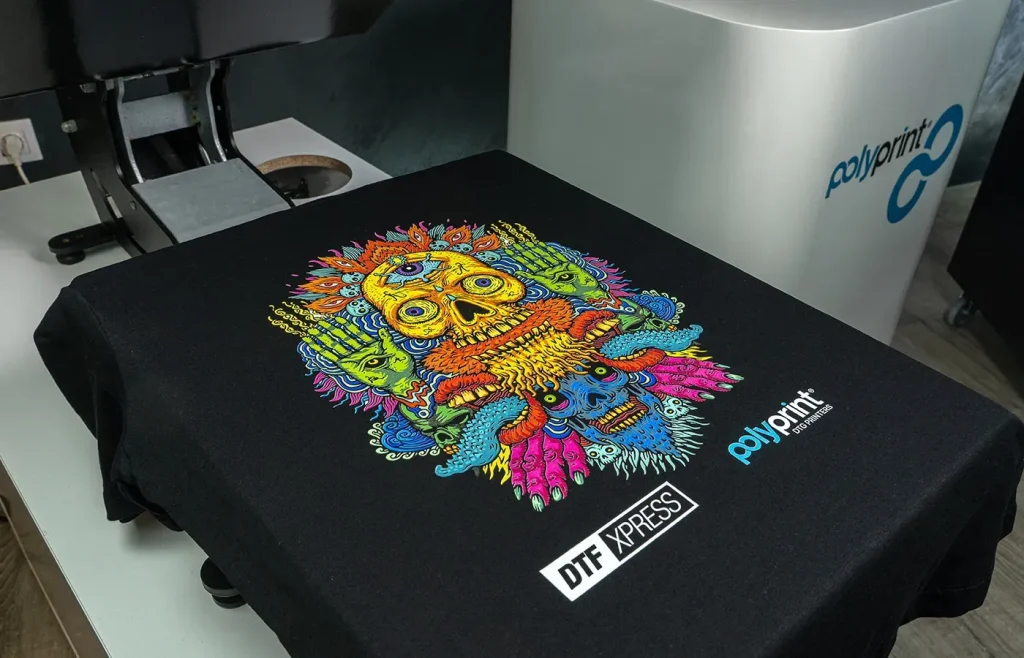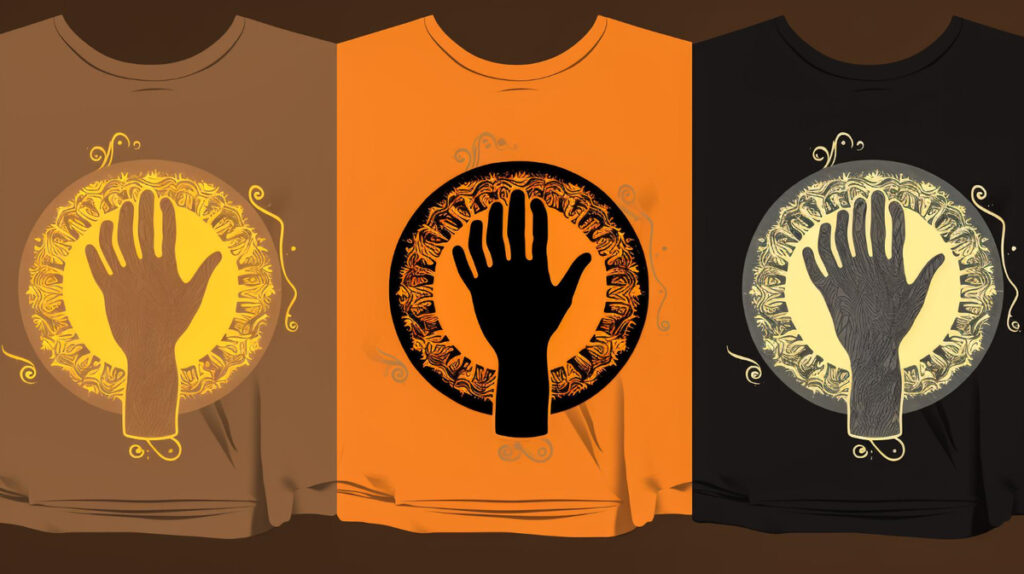DTF printing, or Direct to Film printing, is revolutionizing the landscape of textile printing by offering unparalleled quality and versatility for custom apparel printing. As this innovative print technology continues to gain traction, businesses and designers are discovering its ability to deliver vibrant colors and intricate designs on a wide range of fabrics, from cotton to blends. With DTF technology, the days of limited customization options are fading, paving the way for personalized apparel that truly reflects individual styles and preferences. Moreover, its efficiency makes it a cost-effective choice, especially for small batch production, allowing even startups to harness the power of professional-grade printing. As we explore the reasons why DTF printing is the future of textile printing, the benefits of this cutting-edge method become increasingly apparent.
Known for its transformative impact on fabric decoration, Direct to Film printing has emerged as a leading alternative to traditional screen printing methods. With other terms like film transfer printing and digital heat transfer printing, the essence of this versatile technology lies in its capacity to print stunning images onto a film that is subsequently applied to various textiles. This capability makes it an ideal choice for creating custom apparel and promotional products that cater to the demands of modern consumers seeking personalized and high-quality outputs. As more entrepreneurs and established brands adopt DTF printing, it highlights a significant shift in print technology that prioritizes efficiency and creative freedom. By embracing these advancements, businesses can meet the growing consumer demand for unique textile designs while optimizing their production processes.
What Makes DTF Printing Stand Out in Textile Printing?
DTF printing, or Direct to Film printing, stands out in the realm of textile printing due to its unique process and technological advancements. By printing directly onto a special film and transferring it onto various fabrics, DTF offers remarkable detail and vibrant colors that other methods struggle to match. This technology allows for incredible versatility, making it suitable for a diverse range of materials including cotton, polyester, and even blends. As fashion trends evolve, the ability to produce high-quality prints that cater to different fabric types is a significant advantage for designers and marketers.
Moreover, DTF printing implements advanced techniques that enhance the durability and washability of prints, making them ideal for custom apparel that withstands everyday wear. Unlike other printing methods that may fade or peel over time, DTF prints maintain their integrity, ensuring that designs remain vivid and intact. Businesses leveraging this technology can offer products that not only look great but are built to last, which resonates strongly with today’s quality-conscious consumers.
The Economic Benefits of Embracing DTF Technology
The economic advantages of DTF printing are particularly significant for small businesses and startups. One of the standout features of this printing method is its cost-efficiency for smaller batch sizes. Traditional textile printing methods often require minimum order quantities that can be prohibitive for entrepreneurs looking to explore custom designs without breaking the bank. DTF printing eliminates this barrier, allowing businesses to produce custom graphics without incurring excessive setup costs, making it an attractive option for businesses just starting out.
Additionally, with the rise of affordable DTF printers, more entrepreneurs can enter the custom apparel market. This level of accessibility helps foster a competitive landscape where creativity can flourish without the constraints of high initial investments. As more companies adopt DTF technology, they’re not only reducing their production costs but also enhancing their ability to cater to consumer demands for diverse, personalized apparel options.
DTF Printing Technology: A Game Changer for Custom Apparel Printing
With DTF technology rapidly advancing, it serves as a game changer in the custom apparel printing field. Recent innovations have improved not just the quality of prints, but also the speed and efficiency with which they can be produced. For instance, developments in machines capable of handling intricate designs and demanding production schedules have empowered businesses to keep pace with market trends and customer expectations.
These technological advancements are crucial for businesses wanting to establish themselves in the competitive clothing market. The ability to provide customized, quality prints quickly allows brands to respond to customer feedback and rapidly pivot based on emerging trends. DTF printing epitomizes this agility, proving essential for modern businesses looking to maintain relevance and appeal to today’s consumers.
The Role of Web-to-Print Services in DTF Printing Accessibility
The emergence of web-to-print services has significantly boosted the accessibility of DTF printing, allowing customers to easily create and order custom prints from the comfort of their homes or businesses. Platforms specializing in DTF services streamline the process by offering user-friendly design tools and integrated payment systems, which cater to users with varied levels of technical expertise. This accessibility is revolutionizing how businesses handle custom orders, reducing the need for extensive in-house printing capabilities or technical know-how.
Additionally, these services make DTF printing more attractive to a broader audience, including artists and entrepreneurs without prior experience in textile printing. The simplicity of the web-to-print model lowers the barrier to entry for new businesses, fostering an environment where creativity and innovation can thrive. As these platforms continue to grow and evolve, the standardization of DTF capabilities could further enhance the quality and efficiency of custom apparel production.
DTF Printing and Its Growing Adoption by Major Brands
The adoption of DTF printing technology by major brands reflects its increasing acceptance as a legitimate and valuable method in the textile printing industry. Prominent companies have recognized the benefits that DTF offers in terms of both efficiency and print quality, making it a key player in their production processes. This shift not only validates the technology but also encourages smaller enterprises to follow suit, fostering wider acceptance across the textile market.
As more established brands integrate DTF into their operations, they contribute to the development of best practices and industry standards, which can ultimately benefit all businesses involved in custom apparel printing. The synergy between major corporations and upcoming startups creates an environment ripe for innovation, allowing the textile industry to evolve rapidly in response to consumer demands for unique and high-quality products.
The Future of Textile Printing: Why DTF is Here to Stay
Looking ahead, the future of textile printing appears bright with the continued rise of DTF technology. As consumer preferences shift towards personalization and quality, DTF meets these demands head-on by offering exceptional print capabilities and broad fabric compatibility. The investment in this technology by both new and established businesses signals a long-term commitment to the evolution of textile printing.
Moreover, technological advancements are expected to further enhance the capabilities of DTF printing, such as improvements in print speed, color accuracy, and overall performance. As these innovations unfold, the adaptability of DTF technology positions it as a mainstay in the industry, paving the way for even greater creative possibilities in textile printing. Businesses that embrace this forward-thinking approach will likely find themselves ahead of the curve, capitalizing on trends while delivering high-quality, customizable products to their customers.
Frequently Asked Questions
What is DTF Printing and how does it work?
DTF printing, or Direct to Film printing, is a textile printing method that involves printing images onto a special film, which is then transferred onto fabric using heat and pressure. This technique enables vibrant colors and precise details, making it suitable for various fabrics, including cotton and polyester.
Why is DTF Technology popular for custom apparel printing?
DTF technology is gaining popularity for custom apparel printing due to its versatility across different fabrics, ability to produce high-quality prints without bulky setups, and its cost-effectiveness for small batch production, making it ideal for startups and individual designers.
What are the advantages of using DTF Printing over traditional methods?
DTF printing offers several advantages over traditional methods, such as versatility in handling multiple fabric types, economical for small orders, and advanced printing technology that ensures durability, washability, and vibrant color reproduction for custom designs.
How does DTF Printing compare to screen printing?
Unlike screen printing, which often requires large volumes for cost-effectiveness, DTF printing is economical for smaller runs without hefty setup costs. Also, DTF allows for more complex designs and better detail, making it preferred for custom and personalized prints.
What technological advancements are influencing DTF Printing?
Recent advancements in DTF printing technology, such as Mimaki’s UV DTF printers, enhance color vibrancy and detail, making DTF a robust option in the textile industry. These innovations are key to improving efficiency and expanding the capabilities of DTF printing.
How is DTF Printing accessible for small businesses?
The emergence of affordable DTF printers and web-to-print platforms has made DTF printing more accessible for small businesses. This democratizes high-quality printing technology, allowing entrepreneurs to produce custom designs without significant investment.
| Key Aspect | Details |
|---|---|
| What is DTF Printing? | A printing method where images are transferred from a special film onto fabric using heat and pressure. |
| Versatility Across Fabrics | Works on various fabrics like cotton, polyester, and blends, allowing for creative designs. |
| Economical for Small Batches | Cost-effective for small runs with no hefty setup fees, catering to startups. |
| Advanced Technology | Innovations like UV DTF technology enhance print quality and detail. |
| Market Growth | Emergence of affordable DTF printers, making high-quality printing accessible. |
| Rise of Web-to-Print Services | Streamlines printing process, making custom prints more accessible for consumers. |
| Commercial Adoption | Major corporations adopting DTF for efficiency and cost reduction. |
| Customization and Consumer Demand | Quick turnaround allows businesses to cater to consumer demands for personalized designs. |
Summary
DTF Printing is revolutionizing the textile printing industry, offering unmatched versatility, efficiency, and durability. With its ability to print vibrant colors on various fabric types, DTF has become a preferred choice for businesses aiming to produce high-quality custom designs. The advancements in DTF technology, along with the rise of affordable printers and web-to-print services, have increased accessibility, making it easier for startups and large corporations alike to harness its potential. As we move forward, DTF printing is set to redefine how we approach fabric decoration, allowing for more creativity and responsiveness to market trends. Embracing DTF printing presents an opportunity not only to enhance product offerings but to also align with a cutting-edge printing solution that meets the demands of a dynamic industry.



